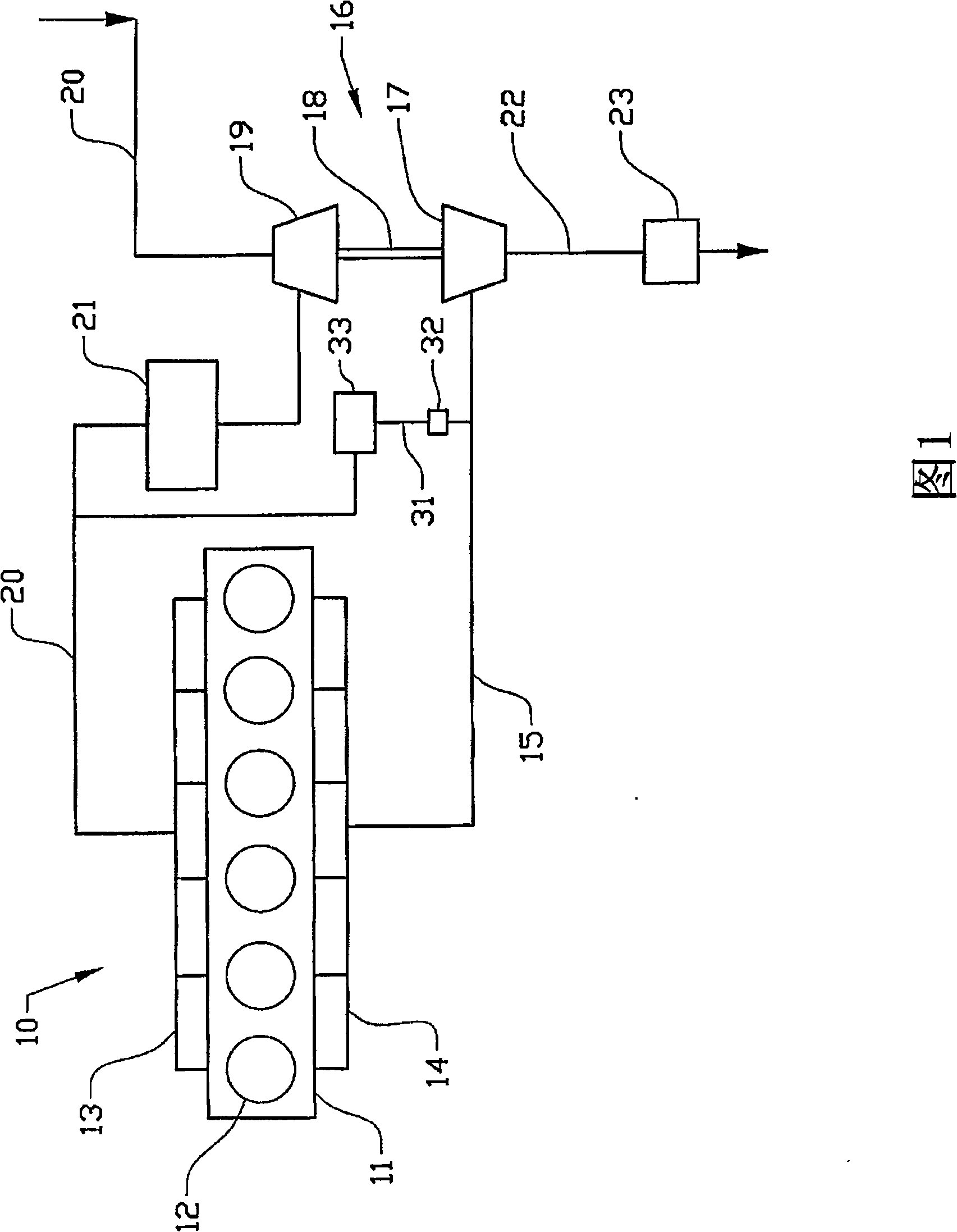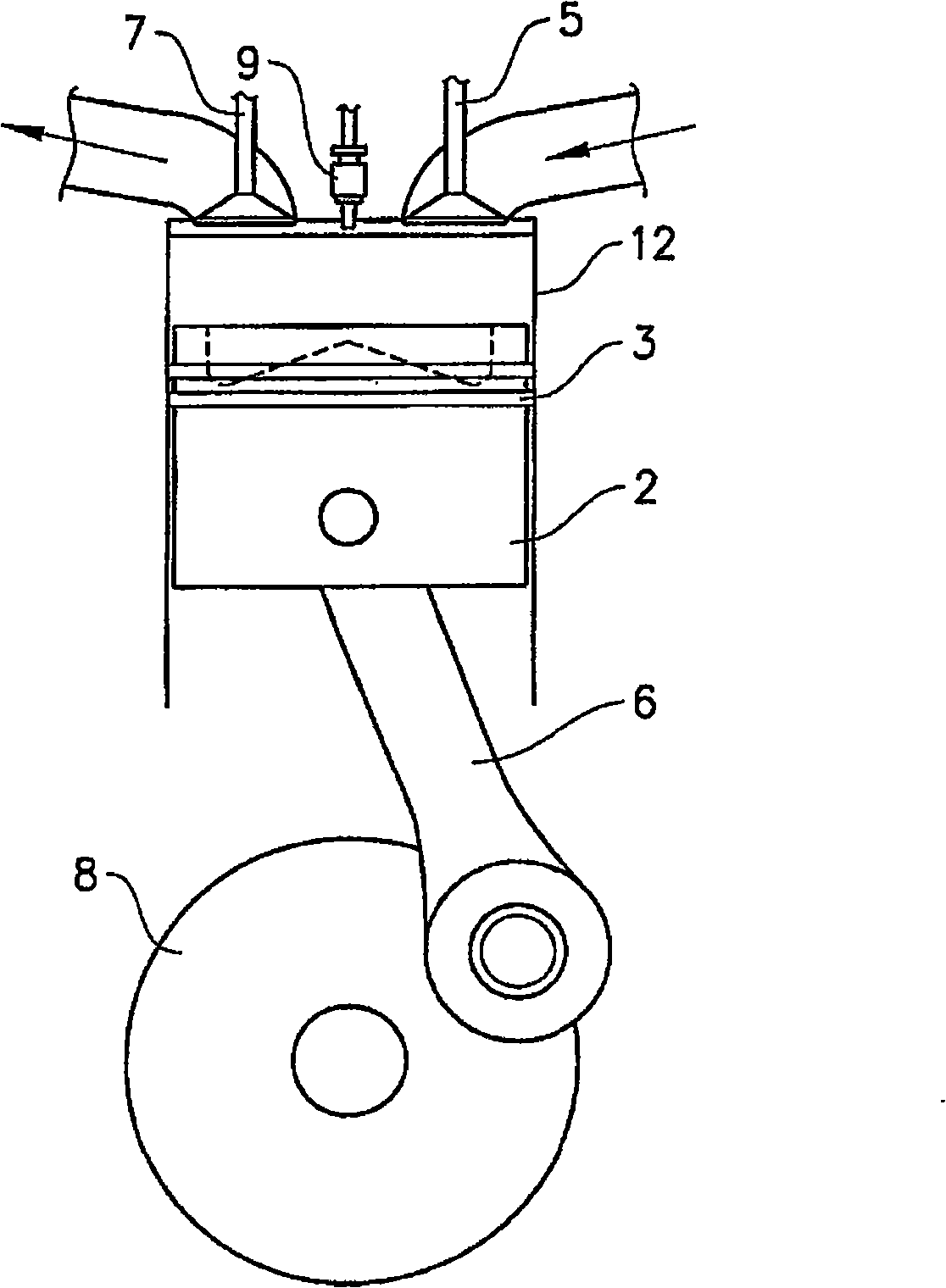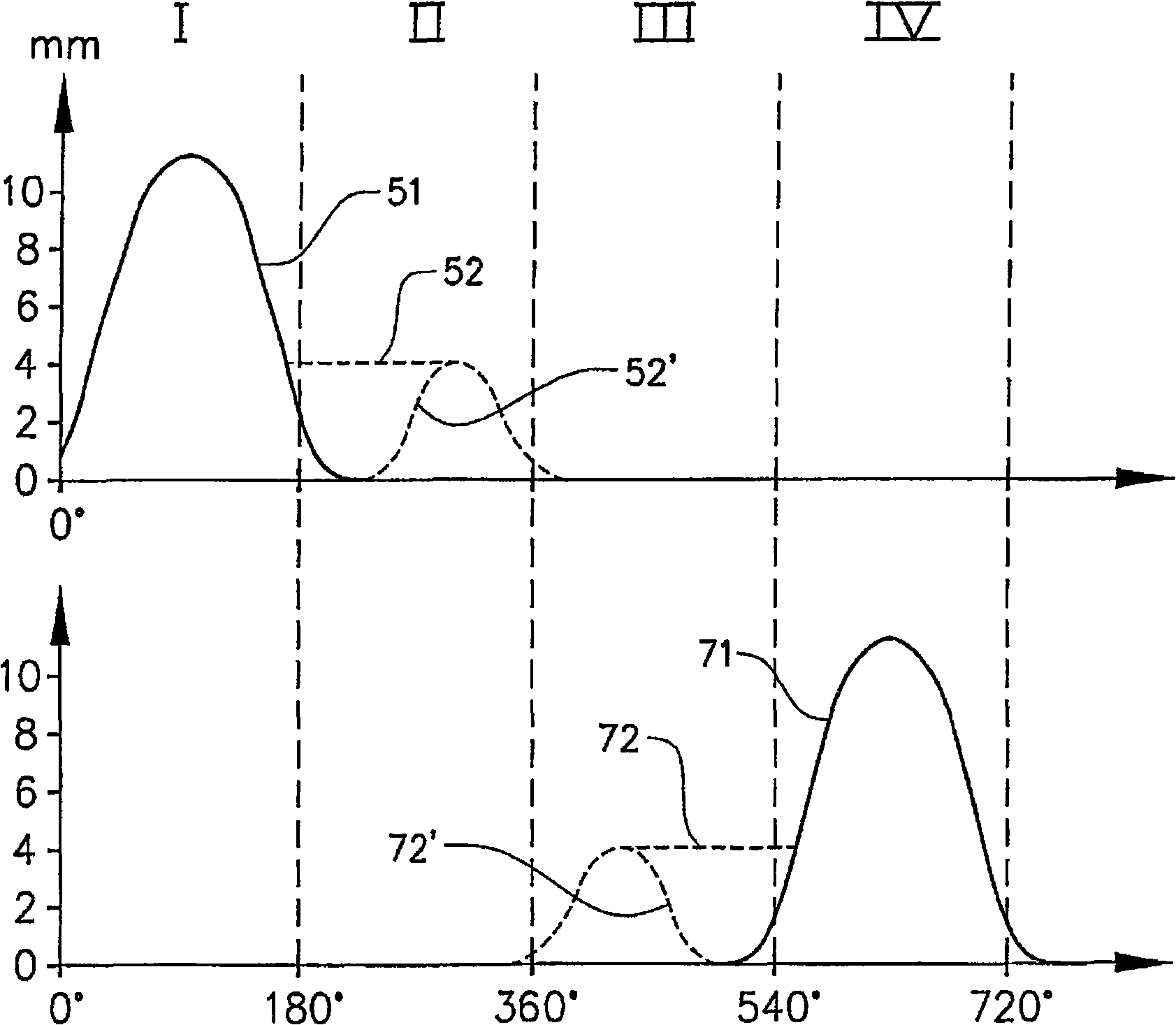Method for operating internal-combustion engines
A technology for internal combustion engines and diesel engines, applied in the field of internal combustion engines, can solve the problems of increased fuel consumption, difficulty in using diesel engines, and misfires, etc., and achieve the effect of eliminating the danger of transfer to the cylinder
- Summary
- Abstract
- Description
- Claims
- Application Information
AI Technical Summary
Problems solved by technology
Method used
Image
Examples
Embodiment Construction
[0016] Figure 1 shows a schematic illustration of an internal combustion engine 10 in the form of a diesel engine. Internal combustion engine 10 includes an engine block 11 having six piston cylinders 12 together with an intake manifold 13 and an exhaust manifold 14 . The exhaust gas of the internal combustion engine is supplied via an exhaust line 15 to a turbine rotor 17 of a turbocharger unit 16 . The turbine shaft 18 drives a compressor wheel 19 of the turbocharger unit 16 , in this way an intake line 20 compresses the incoming air and delivers it to the intake manifold 13 via an air intercooler 21 . Fuel passes through fuel injector 9 (see figure 2 ) is supplied to each cylinder 12. The exhaust gas passing through the turbocharger unit 16 is forwarded via an exhaust line 22 to an exhaust gas aftertreatment device 23 . Furthermore, the internal combustion engine 10 has a system for returning exhaust gas to the intake side of the internal combustion engine 10 via a line ...
PUM
 Login to View More
Login to View More Abstract
Description
Claims
Application Information
 Login to View More
Login to View More - R&D
- Intellectual Property
- Life Sciences
- Materials
- Tech Scout
- Unparalleled Data Quality
- Higher Quality Content
- 60% Fewer Hallucinations
Browse by: Latest US Patents, China's latest patents, Technical Efficacy Thesaurus, Application Domain, Technology Topic, Popular Technical Reports.
© 2025 PatSnap. All rights reserved.Legal|Privacy policy|Modern Slavery Act Transparency Statement|Sitemap|About US| Contact US: help@patsnap.com



